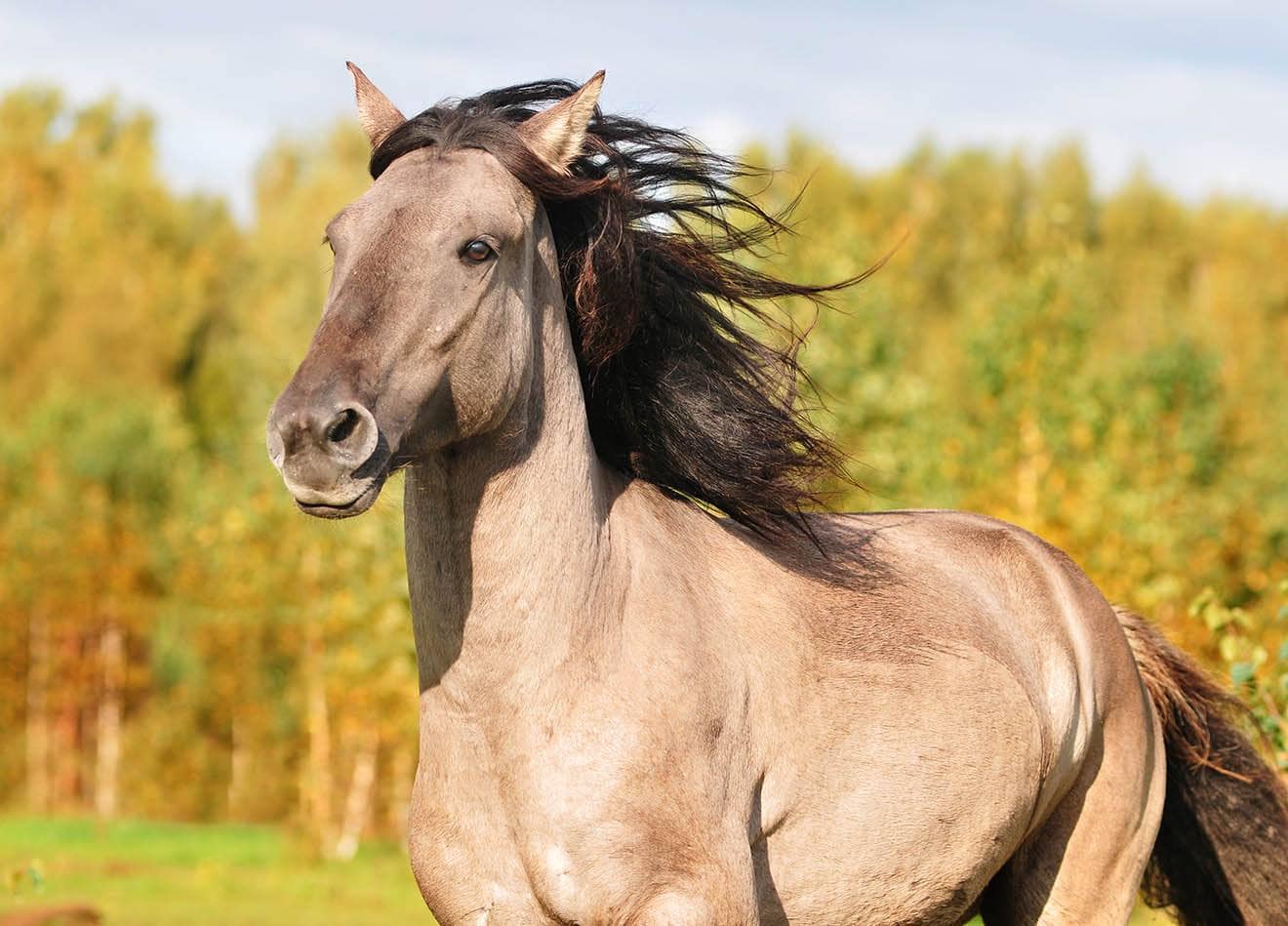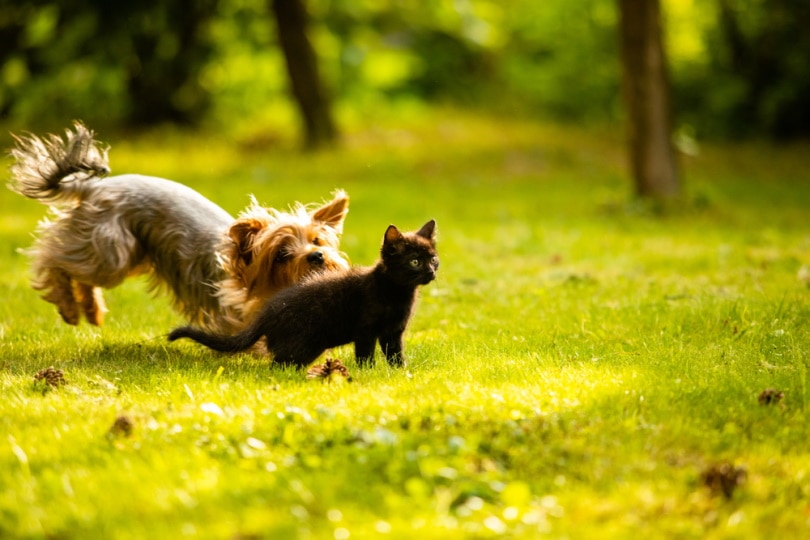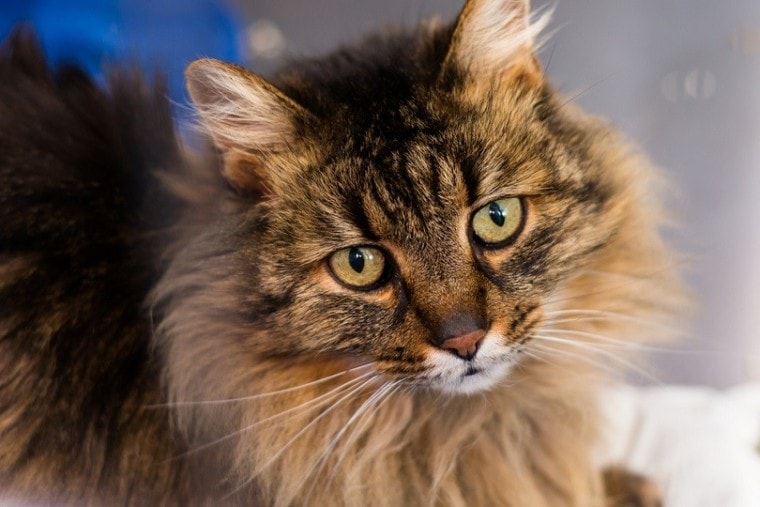
Click Below to Skip Ahead
The Domestic Longhair is a cat with mysterious origins. It’s actually not a specific breed, like the American Longhair, which has a pedigree with a traceable origin.
Breed Overview
Height:
9-16 inches
Weight:
8-15 pounds
Lifespan:
9-15 years
Colors:
White, black, gray, tortoiseshell, tabby, orange
Suitable for:
Apartment dwellers, small families, children, people with no other pets
Temperament:
Playful, good with children, curious, shy towards strangers
Rather, Domestic Longhairs refer to cats that are similar in size to their Domestic Shorthair cousins and have one or both parents that have the longhaired gene. Because of their mixed ancestry, these cats can vary in color and markings and have a wide range in size.
Domestic Longhairs are adorable cats with luxurious coats that tend to have wonderful personalities to match their beautiful appearance. We’re always excited about the idea of a Domestic Longhair cat finding a new home. So, we have a complete and comprehensive overview of these special cats to help you provide the best care that you can for them.
Domestic Longhair Cat Characteristics
Domestic Longhair Kittens
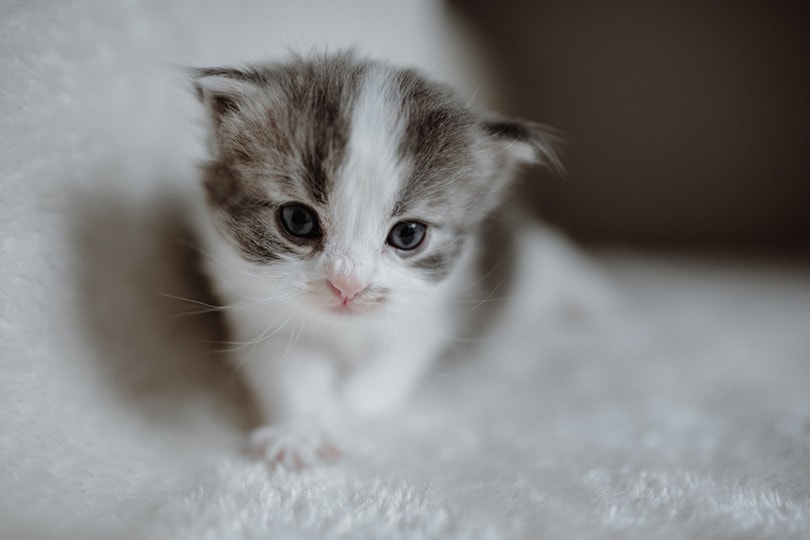
Domestic longhairs are a very popular cat breed. Fortunately, they are common and it shouldn’t be too hard to find one for you. Always make sure you do your research about the cat breed and where to buy or adopt one. Make sure your kitten is healthy and that you can give them enough time and energy to care for them.
Their temperament and traits can vary from each other. Generally, they tend to be playful and curious. They are a great fit for families or people living in apartments. Take a look at what type of care Domestic Longhairs need in terms of diet, grooming, and exercise.
Temperament & Intelligence of the Domestic Longhair
Since Domestic Longhairs have mixed ancestry, they don’t have a predictable temperament as purebred cats do. However, many cat owners have noted that their Domestic Longhair cats are playful and curious, just like their predecessors that used to be mousers in Europe.
Domestic Longhairs’ personalities usually land in between aloof and needy. They’re independent, so they can be left home alone without feeling much separation anxiety. However, they also form strong bonds with their families and can be very sweet companions.
Are These Cats Good for Families? 👪
Domestic Longhairs tend to have patience with young children and can also have a very playful side to them. When properly socialized, they can become great playmates for children.
The best way to socialize a Domestic Longhair is to work on it when they’re young kittens. Kittens will have an easier time learning and getting used to being handled.
When you first bring home a Domestic Longhair, make sure to supervise all interactions the cat has with your children. Children should also learn how to respectfully handle cats, such as not poking them or trying to touch their faces.
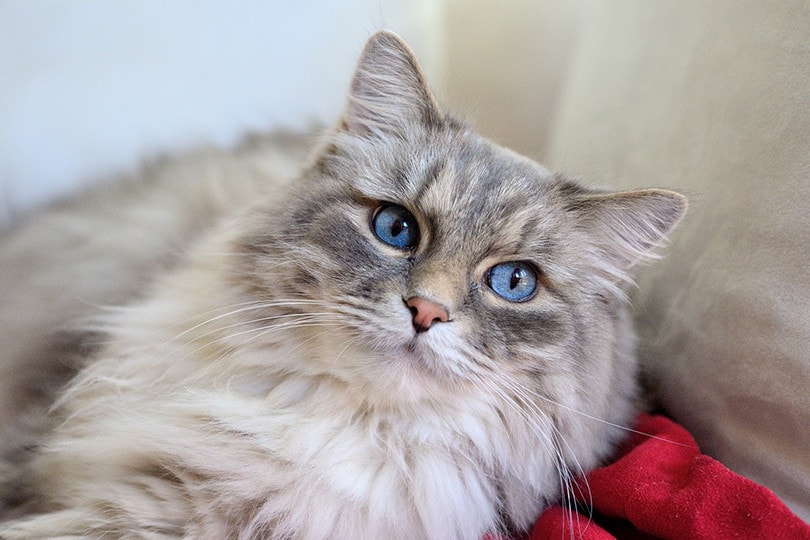
Does This Breed Get Along with Other Pets?
Domestic Longhairs typically don’t do well with other pets. They tend to be solitary and don’t like being around dogs. These cats like to observe from perches, so they won’t want to interact with a loud or energetic dog.
Cats tend to be territorial, so they typically don’t do well in a house with too many cats. Sometimes, you can bring home a bonded pair, which are sets of kittens that grew up together and formed an attachment to each other.
Since many Domestic Longhairs were bred as mousers, they also can’t be fully trusted with small pets. Their prey drive can kick in at unpredictable moments, so they should never be left alone with other small pets, especially rodents.
Overall, Domestic Longhairs will do best in homes where they’re the only pet. You can try to socialize them to live with other cats, and you’ll have the most success when socialization starts when they’re kittens.
Things to Know When Owning a Domestic Longhair:
Domestic Longhairs are generally fairly easy cats to care for and don’t typically have any severe health conditions. So, they’re great for first-time cat owners. Here’s a breakdown of their basic care needs.
Food & Diet Requirements 
Cats are obligate carnivores, so they thrive on high-protein diets. Your cat should have a diet consisting of at least 25% protein. Indoor cats and cats that have been spayed or neutered are especially susceptible to becoming overweight and obese.
So, if you have an indoor Domestic Longhair, it’s important to make sure that they’re on a low-carb diet. You can work with your veterinarian to figure out the right brand of cat food and the correct amount of food your cat should eat every day.
Domestic Longhairs don’t tend to have food allergies, so it’s safe for them to eat most kinds of cat food. Cats will display some or all of the following symptoms if they have a food allergy:
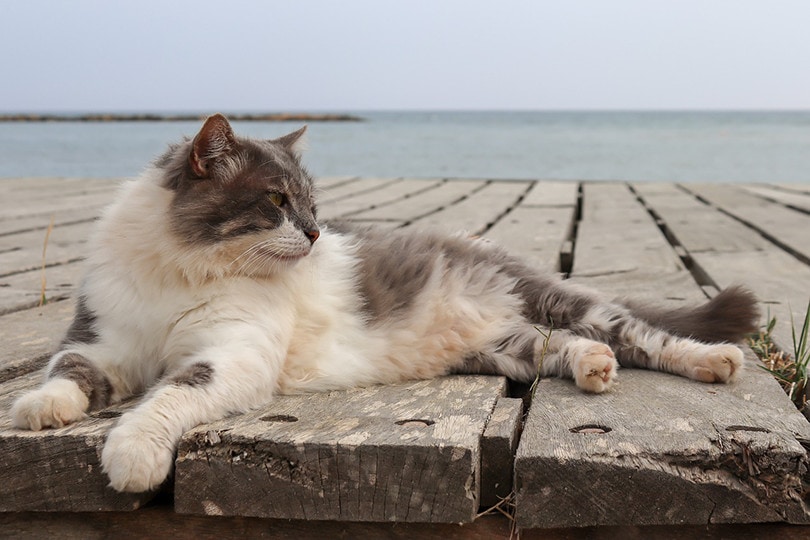
Exercise 🐈
Domestic Longhairs tend to be active and playful cats with a strong prey drive. They’ll need plenty of play and exercise to prevent them from experiencing boredom that can eventually lead to destructive behaviors.
You can promote healthy exercise by supplying toys that your cat can chase around, such as an automatic cat toy or cat wand. You can also install cat trees and perches around the house to encourage your cat to jump, leap, and perch from platform to platform.
If you have an enclosed backyard, you can let your cat out to explore. Just make sure that your fences are over 6 feet tall or have fence rollers or other safety measures in place to prevent your cat from escaping. Domestic Longhairs can be extremely agile and smart escape artists, so it’s imperative to watch for any escape attempts.
Training 🧶
In general, cats don’t typically learn training as dogs do. They can be very independent and not learn or take to listening to verbal commands. You may be able to use treats as positive reinforcement whenever your cat exhibits good behavior, such as using the litter box. However, your Domestic Longhair most likely won’t learn any tricks that you can use on command.
Grooming ✂️
The coats of Domestic Longhair will vary depending on the cat’s history. However, most cat owners can expect to spend at least several days a week brushing their cat’s hair. Domestic Longhairs will groom themselves, but if they have particularly long coats, their hair can tangle and become matted. So, they’ll need help maintaining their coats. These cats will benefit from slicker brushes and combs that can get past their long fur and thoroughly brush their hair.
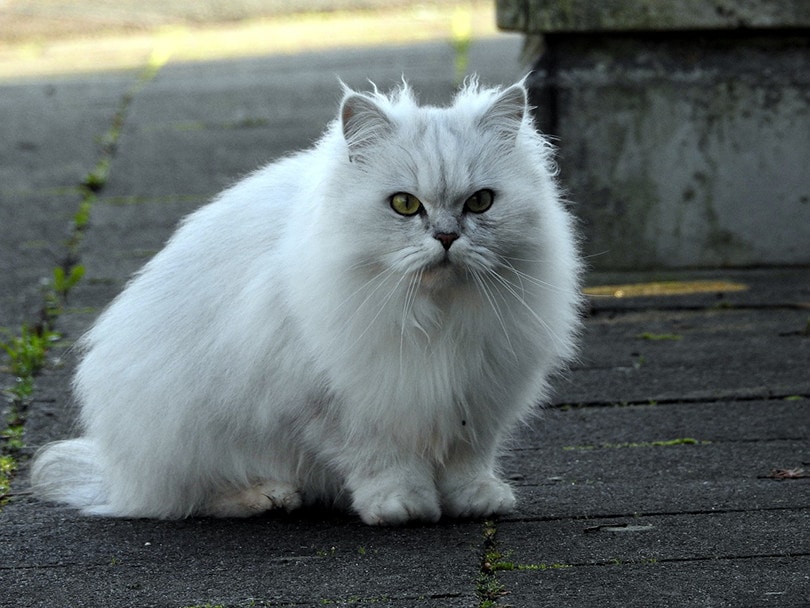
Health and Conditions 🏥
Because Domestic Longhairs don’t have a specific lineage from purebred cats, they don’t have any unique health conditions. However, they can develop common health issues as they age, so it’s important to stay on top of routine checkups.
Male vs Female
There aren’t any definitive distinguishable traits between male and female Domestic Shorthairs. Temperament will vary depending on the cat’s unique ancestry and home environment.
However, spaying and neutering can affect a cat’s behavior. For example, neutered cats are less likely to do urine marking, and spayed cats won’t be as active as their unspayed counterparts. Spayed and neutered cats may not be as territorial, so they may have an easier time learning to live with other cats.
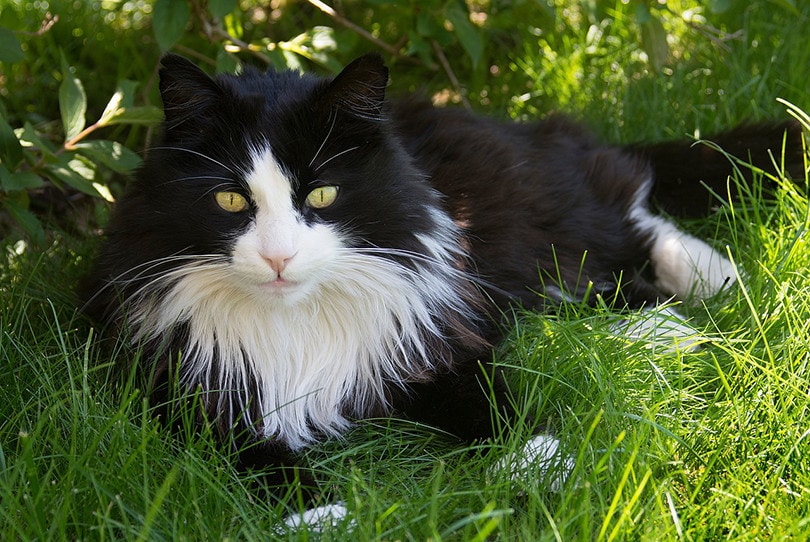
3 Little-Known Facts About the Domestic Longhair Cat
1. The Longhair gene is recessive, and only 10% of cats are recognized as longhaired.
It’s rarer to find a longhaired cat than a shorthaired cat because long hair is a recessive trait. For a cat to receive recognition as longhaired, its coat must be at least 2 inches long.
2. Humphrey is one of the most famous Domestic Longhair cats.
Humphrey is a Domestic Longhair that was found as a stray near the official residence of the British Prime Minister, 10 Downing Street. He was adopted and employed as Chief Mouser to the Cabinet Office and lived in 10 Downing Street from 1989 to 1997.
Humphrey’s employment started a long tradition of cats living as Chief Mousers in the Prime Minister’s home. Today, the Chief Mouser in residence is Larry the Tabby.
3. Domestic Longhairs were excellent mousers that helped keep the rat population in Europe under control.
During the 1600s when the plague was rampant, Domestic Longhairs were used to catch rats. Many rats carried infected fleas that would spread the plague, and people bred more Domestic Longhairs to hunt them.
Settlers and travelers eventually brought these cats aboard ships sailing to America, and they became just as popular in new lands.
Final Thoughts
Domestic Longhairs have been co-existing and living harmoniously with humans for centuries. They’re independent yet affectionate, making them great companions built to survive. These cats will do well in homes with no other pets but have plenty of playtime moments, toys, and fixtures that help them exercise their prey drive.
Bringing home a Domestic Longhair can be unpredictable. Still, as you learn and get used to its unique temperament and personality, you’ll be sure to find a loving companion that shows you love and affection in its own special way.
Featured Image Credit: Todorean-Gabriel, Shutterstock



